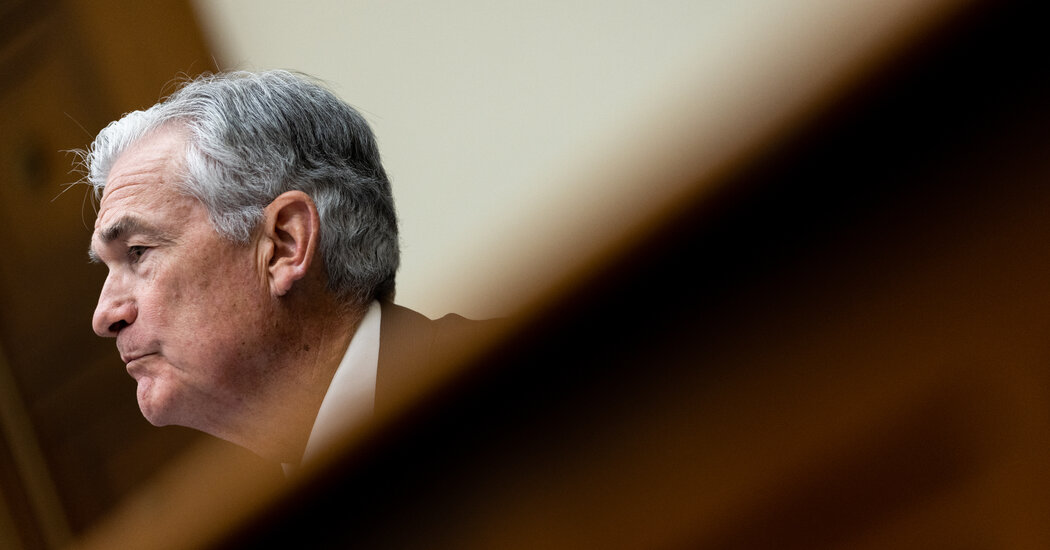
Federal Reserve officials received a complicated signal from February’s employment report, which showed that job growth retained substantial momentum nearly a year into the central bank’s campaign to slow the economy and cool rapid inflation. But it also included details hinting that the softening the Fed has been trying to achieve may be coming.
Policymakers have raised interest rates from near zero to above 4.5 percent over the past year, and Jerome H. Powell, the Fed chair, signaled this week that the size of the central bank’s March 22 rate move would hinge on the strength of incoming data — making Friday’s employment report a critical focal point for investors.
But the figures painted a complicated picture. Employers added 311,000 workers last month, which were more than the 225,000 expected and a sign that the pace of hiring has cooled little, if at all, over the past year. At the same time, wage growth moderated to its slowest monthly pace since February 2022, and the unemployment rate ticked up slightly.
“It’s exactly what I wasn’t hoping for, which is a mixed report,” said Michael Feroli, chief U.S. economist at J.P. Morgan.
That makes determining the Fed’s next steps more challenging.
Officials raised rates in large three-quarter-point increments four times in 2022, making borrowing sharply more expensive in hopes of restraining a hot economy. But they had been slowing the pace of adjustment for months, stepping down to half a point in December and a quarter point in February. Policymakers thought they had reached the point where interest rates were high enough to significantly cool the economy, so they expected to soon stop raising rates and simply hold them at a high level for a while.
But data from early 2023 have surprised the central bank. The labor market, inflation and consumer spending all showed unexpected signs of strength, which made policymakers question whether they might need to raise rates by more — or even return to a faster pace of adjustment. That’s why central bankers have been looking to incoming data from February for a sense of whether the robust January figures were a one-off or a genuine sign of strength.
“If the totality of the data were to indicate that faster tightening is warranted, we would be prepared to increase the pace of rate hikes,” Mr. Powell told lawmakers this week, emphasizing that “no decision has been made on this.”
Friday’s figures suggested that hiring is genuinely resilient: Employers added more than half a million workers in the first month of the year, even after revisions.
But the slowdown in wage growth could be good news for the central bank. Officials have been nervously eyeing rapid wage gains, fretting that it will be difficult for inflation to cool when employers are paying more and trying to make up for those climbing labor bills by passing the costs along to consumers.
That said, a closely watched measure of wages for production workers who are not managers — rank-and-file employees, basically — held up. Wage data bounce around, and economists often watch that measure for a clearer reading of underlying momentum in pay gains.
Priya Misra, head of global rates strategy at TD Securities, said she thought the report made the size of the Fed’s next rate move a “tossup.” The pace of hiring is likely to suggest to officials that the labor market is still hot, but the other details could give them some room to watch and wait.
“It’s not an obvious slam dunk for 50,” Ms. Misra said, referring to a half-point move.
The upshot, she said, is that investors will need to closely watch the Consumer Price Index report that is scheduled for release on Tuesday. The fresh figures will show how hot inflation was running in February, giving central bankers a final critical reading on where the American economy stands heading into their decision.
“It makes this the most important C.P.I. report — again,” Ms. Misra said.
Economists in a Bloomberg survey expect monthly inflation readings — which give a clearer sense of iterative progress on cooling price increases — to slow on an overall basis, but to hold steady at 0.4 percent after volatile food and fuel prices are stripped out.
One challenge is that the numbers will come out during the Fed’s pre-meeting quiet period, which is in place all of next week, so central bankers will not be able to tell the world how they are interpreting the new data.
Understand Inflation and How It Affects You
Further complicating the picture: Glimmers of stress are surfacing in the banking system, ones that are tied to the Fed’s rapid rate moves over the past 12 months. Silicon Valley Bank, which lent to tech start-ups and failed on Friday, was squeezed partly by the jump in interest rates.
That development — and the possibility that it might herald trouble at other regional banks — could also matter to how the Fed understands the rate outlook.
“It shows us: No, we haven’t really digested all of the effects of what the Fed has done so far,” said Aneta Markowska, chief financial economist at Jefferies. “There’s still a lot of policy pain in the pipeline that hasn’t hit the economy yet.”
William Dudley, a former president of the Federal Reserve Bank of New York, said there are probably other banks that loaded up on longer-term assets when rates were low and are now suffering from that as short-term borrowing costs rise. That makes those older assets less attractive — and less valuable — if a bank has to sell them to raise cash.
But he said that Silicon Valley Bank was probably an extreme example, and that it’s possible the whole situation will have blown over by the time the Fed meets next.
“By a week and a half from now, this whole thing could be over,” he said. He added, though, that he didn’t have much clarity on how big the Fed’s next rate move would be, in any case.
“I am totally confused about the Fed at this point,” he said.

